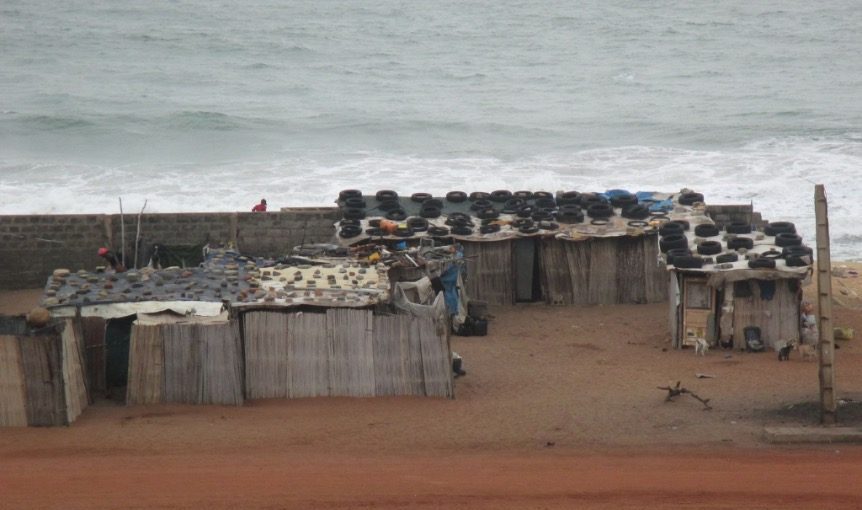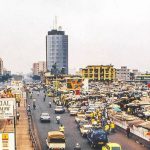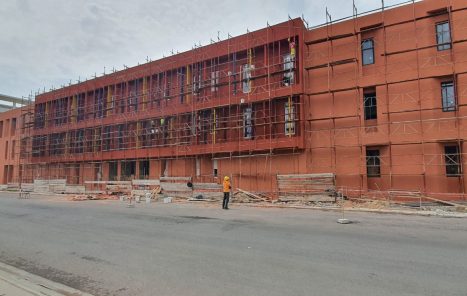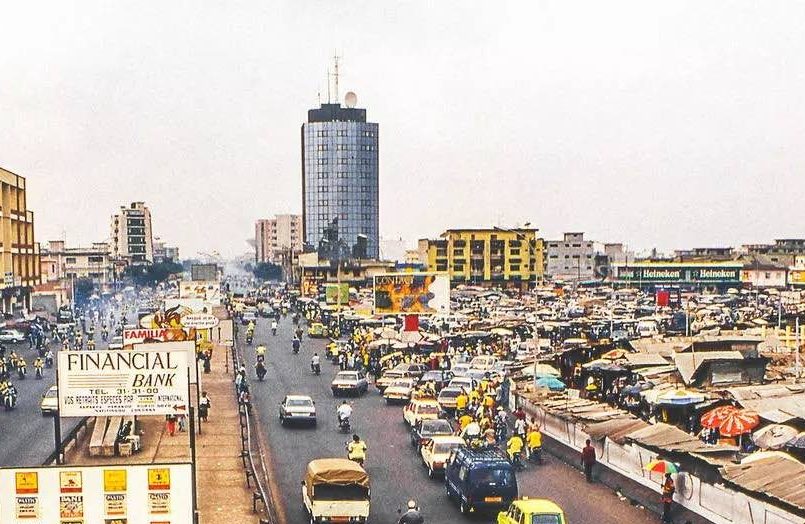Towards a more humane architecture
Every time I look at these informal settlements, I have hope.
I have hope as a living being because I see that you don’t have to be rich to have a living space.
I have even more hope as an architect because I see the solution to our architectural and urban challenges in Benin, in Africa and everywhere in the world.
I see simplicity, functionality, beauty, love and humanity.
I see true, necessary and needed architecture, not false and capricious architecture. I see architecture that is local, practical, ecological, has an identity, life and color.
It’s fascinating how simple inhabitants, with no training in architecture or engineering, can build more responsibly than us licensed professionals.
Look at how they use palm branches to create their walls and facades: walls that are made of local and accessible material, walls that breathe because they facilitate and allow natural ventilation. Look closer and you will see how they connect in a simple way the different limbs of these palm branches to support the wall facade. To me it’s fascinating and I’m actually in love with it. Tell you that it is villagers who shape these wall panels out of palm branches and send them to the city to sell.
But in reality, there is no magic or secret. Their strength is in their humanity and the simplicity of their everyday lives. They have no choice economically so they use their heads. They build with the bare minimum and the materials available around them. And believe me, this is the best way to build and live your life in reality.
Look at how they use bricks and tires to keep their roofs from blowing away. Look at the harmony and aesthetics in the arrangement of these every day, recycled materials. The facade is more vibrant than ever. Look and see the beauty in these magnificent pieces of art that flood our cities, but are not seen for what they are. Underneath the rocks and tires, you can see tarps. This is no coincidence, as tarps are strong and impervious to rain.
Go to these informal settlements and you will see the life that is there. They have their schools, churches, mosques, bars, entertainment areas and so on. They even have wells that they make themselves. It’s just breathtaking. And when you pass by these informal establishments, pay attention to how the children and the younger ones are having fun and activating the streets that are the arteries and veins of a city. You will rarely see this moment in front of our homes behind our concrete fortresses.
My message is simple. We must reclaim our identity architecturally and in urbanism. We need to reclaim our vernacular architecture and stop copying and being influenced by western and colonial architecture that has no place in our environment, in our landscape. As I often say, “Concrete is not the right material for our tropical climate here in Benin. It is just a colonial influence that we have inherited over time. Concrete absorbs and takes time to release heat, hence our dependence on mechanical ventilation in the evening – an unhealthy dependence –
It is imperative that we integrate informal settlements into the city’s landscape and urban fabric, instead of pushing them out. This is our biggest mistake because, in reality, we will benefit enormously from them, not the other way around.
I would also like to add that I think the term “informal settlement” should be banned and/or changed. For your information, these informal settlements pay taxes and often even rent the land they sit on.
After reading this article, take another look at these informal settlements and be inspired by their architecture and inhabitants. You will no longer see the city of Cotonou in the same way. You won’t see yourself the same way.
It might take you some time like any new habit, but trust me, it’s worth it.
Article written in 2015 by Habib Mémé, Architect, Co-founder of Atelier des Griots and Director of Cabinet Architecture du Soleil – CAS



